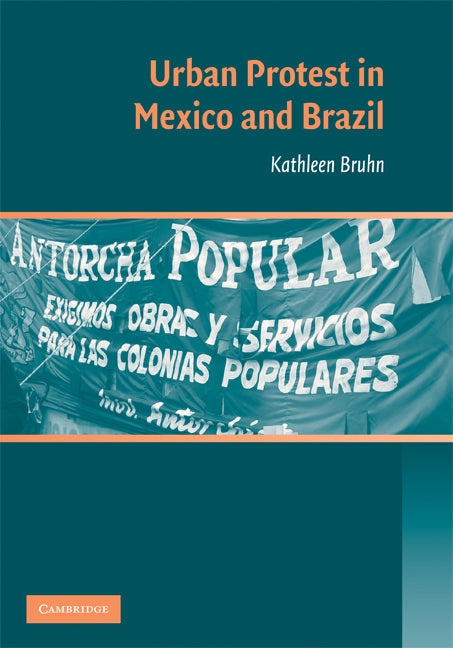Freshly Printed - allow 6 days lead
Couldn't load pickup availability
Urban Protest in Mexico and Brazil
Analyzes how protest became a key part of organizational maintenance and how organizations use protest as a political tool.
Kathleen Bruhn (Author)
9780521881296, Cambridge University Press
Hardback, published 3 March 2008
224 pages, 15 tables
23.4 x 15.8 x 1.8 cm, 0.45 kg
“Most movement scholarship is movement ‘centric’ in its ignorance of other parties to contention, and biased toward the study of reform movements in Western democracies. That is what makes Bruhn’s book such a welcome change. Not only does her comparative study of movements in Brazil and Mexico shed light on the dynamics of contention in an important and understudied regime context, but in focusing her analysis on the dynamic relationships between states, parties and movements, the author offers a model for the way movements ought to be studied. This book deserves to find a broad audience in sociology and political science.”
Doug McAdam, Stanford University
Why do social organizations decide to protest instead of working through institutional channels? This book draws hypotheses from three standard models of contentious political action - POS, resource mobilization, and identity - and subjects them to a series of qualitative and quantitative tests. The results have implications for social movement theory, studies of protest, and theories of public policy/agenda setting. The characteristics of movement organizations - type of resources, internal leadership competition, and identity - shape their inherent propensity to protest. Party alliance does not constrain protest, even when the party ally wins power. Instead, protest becomes a key part of organizational maintenance, producing constant incentives to protest that do not reflect changing external conditions. Nevertheless, organizations do respond to changes in the political context, governmental cycles in particular. In the first year of a new government, organizations have strong incentives to protest in order to establish their priority in the policy agenda.
1. Riding the tiger: urban protest and political parties
2. Setting the stage: research design, case selection, and methods
3. The limits of loyalty
4. A union born out of struggles: the union of municipal public servants of Sao Paulo (SINDSEP)
5. Partisan loyalty and corporatist control: the unified union of workers of the government of the federal district (SUTGDF)
6. Clients or citizens? Neighborhood associations in Mexico City
7. Favelas and corticos: neighborhood organizing in Sao Paulo
8. The dynamics of protest.
Subject Areas: Political economy [KCP], Demonstrations & protest movements [JPWF], Comparative politics [JPB], Sociology [JHB]


